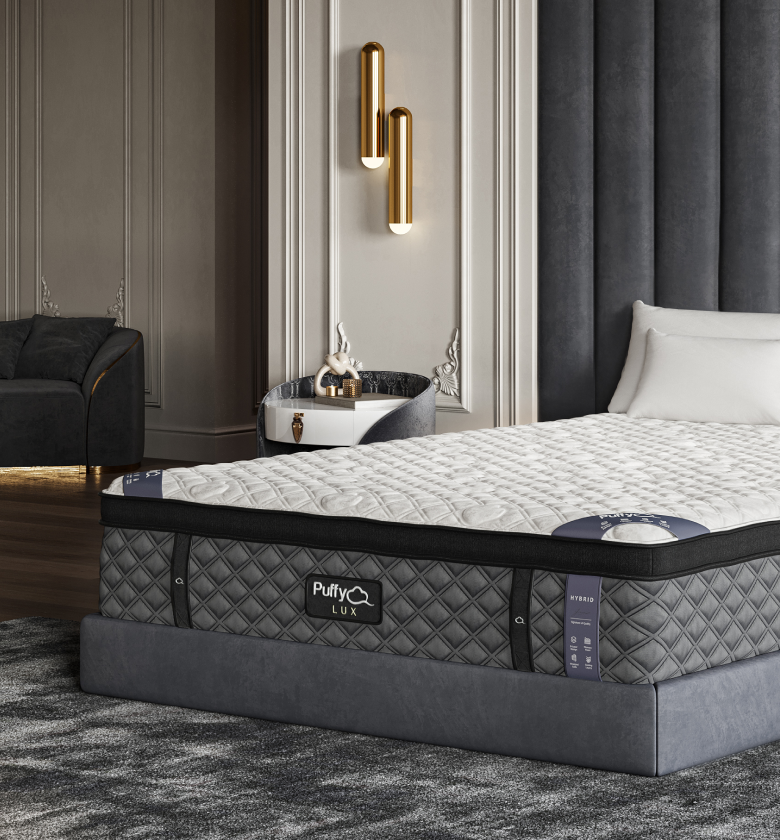A mattress cover is an essential component of bedding, offering protection against spills, dust, and wear. While there are many ready-made options available, crafting a DIY mattress cover allows for customization in terms of fabric, size, and style.
This is particularly beneficial for mattresses with unique dimensions or specific protection needs. This guide will walk you through various methods of making a mattress cover, from a basic protector to a more advanced zippered version.
How to Make a Mattress Cover
Creating a basic mattress cover is a straightforward process that requires minimal sewing skills and some basic materials.
Steps for a Simple Mattress Cover:
- Measure Your Mattress: Get the length, width, and depth to ensure a perfect fit.
- Choose Your Fabric: Opt for durable, washable fabrics like cotton, polyester, or blends.
- Cut the Fabric: Based on your measurements, cut the fabric, allowing extra for seam allowances.
- Sew the Edges: Hem the edges or sew the fabric pieces together, leaving one side open.
- Add Elastic: For a snug fit, sew elastic around the open end of the cover.
How to Make a Mattress Cover with Zipper
A zippered mattress cover offers more protection and is easier to remove for washing.
Creating a Zippered Cover:
- Materials Needed: Fabric, a long zipper, sewing machine, thread, scissors.
- Cutting the Fabric: Measure and cut the fabric, adding extra for the zipper seam.
- Sewing the Zipper: Attach the zipper to one end of the fabric pieces.
- Assembling the Cover: Sew the remaining three sides, enclosing the mattress cover.
- Fit and Test: Ensure the cover fits snugly on the mattress and the zipper operates smoothly.
Zippered covers complement high-quality mattresses like those from Puffy by offering an additional layer of convenience and versatility, enhancing the overall care and longevity of your mattress.
How to Make a Fitted Mattress Cover
A fitted mattress cover, similar to a fitted sheet, stays securely in place and is easy to put on and take off.
Steps for a Fitted Cover:
- Accurate Measurements: Get the exact dimensions of your mattress, including depth.
- Choosing Elastic: Opt for quality elastic that can withstand regular use.
- Sewing Corners: Create ‘boxed’ corners for a snug fit.
- Attaching Elastic: Sew elastic around the entire perimeter of the bottom edge.
- Quality Check: Test the fit on your mattress to ensure it’s snug and secure.
Choosing the Right Fabric for Your DIY Mattress Cover
The fabric you choose for your mattress cover can impact its feel, protection level, and durability.
Fabric Options:
- Cotton: Breathable and soft, ideal for comfort.
- Polyester Blends: Durable and often water-resistant, good for protection.
- Hypoallergenic Fabrics: For those with allergies or sensitivities.
Maintenance and Care of Your DIY Mattress Cover
To ensure your homemade mattress cover lasts long and remains effective, proper care is essential.
Care Tips:
- Regular Washing: Clean the cover regularly to maintain hygiene.
- Gentle Detergents: Use mild detergents to prevent fabric damage.
- Avoid High Heat: Dry on low heat to prevent shrinking and elastic damage.
Customizing Your Mattress Cover for Enhanced Protection
Depending on your needs, you can customize your DIY mattress cover for added functionality.
Customization Ideas:
- Waterproofing: Add a waterproof layer for spill and stain protection.
- Quilting: For added comfort, quilt the top layer of the cover.
- Aesthetic Touches: Incorporate colors and patterns that match your bedroom decor.
Interested in how Puffy stacks up against other brands? Check out our mattress comparisons: Puffy vs Purple, Puffy vs Nectar, Puffy vs Casper, Puffy vs Leesa, Puffy vs Saatva, Puffy vs DreamCloud, and Puffy vs Tuft and Needle.
The Benefits of a DIY Mattress Cover
Creating your own mattress cover comes with several advantages.
Advantages of DIY:
- Cost-Effective: Often cheaper than buying a ready-made high-quality cover.
- Personalization: Tailor it to your specific mattress size and preference.
- Satisfaction: The DIY process can be enjoyable and fulfilling.
Troubleshooting Common Issues in DIY Mattress Covers
While making a mattress cover is generally straightforward, you might encounter some challenges.
Problem-Solving Tips:
- Fabric Slippage: Use pins or fabric clips to hold slippery materials in place while sewing.
- Uneven Seams: Measure twice and cut once to ensure accuracy.
- Zipper Challenges: Practice sewing zippers on scrap fabric before the final attempt.
Check out Puffy mattress reviews from real customers and see how we compare with other brands.
When to Consider a Professional Mattress Cover
There are situations where a professionally made mattress cover might be more suitable.
Scenarios for Professional Covers:
- Complex Mattress Shapes: Non-standard shapes might require expert tailoring.
- Advanced Features: Waterproofing or allergen-proofing might be better left to professionals.
For mattresses with unique features, such as the specialized designs from Puffy, pairing them with a professionally made cover can provide an optimal blend of protection and tailored fit, ensuring the mattress maintains its premium quality and comfort.
Conclusion: Embracing the Craft of Making Mattress Covers
A DIY mattress cover not only adds a layer of protection to your mattress but also allows for customization to fit your exact needs and preferences. Whether you opt for a simple design or a more complex zippered or fitted cover, the process can be a satisfying and practical project.
Use our store locator to find the closest furniture or mattress store near you and feel the cloudlike comfort of our Puffy Mattress in person.
Remember, while a homemade cover can be effective, investing in a professionally made cover can provide the best protection and durability. Either way, a good mattress cover is an essential component for maintaining the longevity and hygiene of your mattress.

- Award-Winning Comfort
- Lifetime Warranty
- 101-Night Sleep Trial
- Free Shipping in 1 - 2 Days
- Assembled in USA












